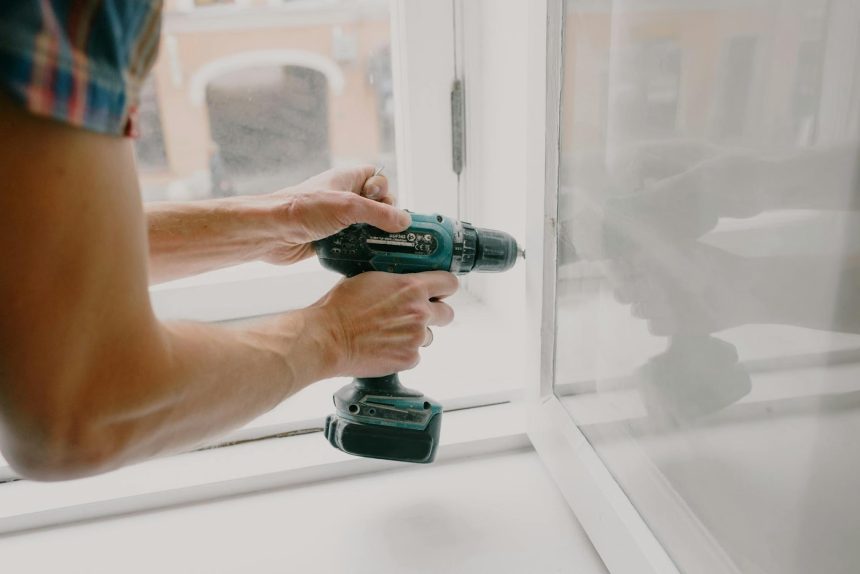Homes age just like everything else, and with time, certain parts begin to show wear, even if they still look fine on the surface. In cities like Mission Viejo, many homes may appear relatively new, yet a large number were built in the 1990s, which means they’ve already stood for more than two decades. While that might not sound old, small issues can develop that impact comfort, efficiency, and even safety. If you’ve been living in your home for more than ten years, now is the right time to take a closer look at some key areas.
This article will help you identify which parts of your home deserve attention and why staying proactive can save you from costly surprises later.
Inspect the Roof and Gutters
Your roof protects your entire home, but after a decade or more of exposure to wind, rain, and sun, it’s bound to show wear. Cracked shingles, damaged flashing, or small leaks can quickly escalate into serious problems if ignored. Gutters are equally important. They direct rainwater away from your home’s foundation. When clogged with leaves or debris, they can cause water to overflow and damage walls or landscaping. It’s smart to inspect your roof twice a year, especially after heavy weather, and clean gutters regularly. Addressing these small maintenance tasks keeps your home dry, strong, and safe from long-term water damage.
Check Your HVAC System
Even though Mission Viejo doesn’t experience extreme weather, your HVAC system remains one of the most important components for indoor comfort. Warm summer days and the occasional cool winter nights still require reliable temperature control. Over time, filters clog, ducts collect dust, and mechanical parts wear down, which can reduce efficiency and air quality. It’s a good idea to schedule an annual inspection and cleaning. Trusted professionals like One Hour Heating & Air Conditioning® of Mission Viejo can detect early signs of malfunction, clean out debris, and ensure your system runs efficiently. Taking care of your HVAC unit not only helps maintain comfort but also keeps energy costs in check and extends the system’s life.
Examine Plumbing and Water Lines
Pipes, valves, and water lines endure constant use and naturally deteriorate with time. Corrosion, minor leaks, or mineral buildup can lead to reduced water pressure and water waste. Regularly check under sinks, around toilets, and near your water heater for signs of moisture or discoloration. These early clues can indicate a leak or failing seal. If you notice fluctuating water pressure, rust-colored water, or unusual sounds, call a licensed plumber to inspect the system. Preventive maintenance keeps your plumbing efficient and protects your home from hidden leaks that could cause structural or mold issues later on.
Assess Electrical Wiring and Outlets
Older electrical systems can struggle to handle the power needs of modern households. If you’ve lived in your home for over ten years without an electrical inspection, now’s the time to have one done. Look for signs like flickering lights, buzzing sounds, warm outlets, or breakers that trip often. These can indicate wiring issues or overloaded circuits. Hiring a certified electrician to check the wiring ensures everything meets safety standards and reduces fire risk. A professional can also suggest upgrades, such as additional outlets or surge protectors, to make your home safer and more convenient for today’s technology.
Look at Windows and Doors
Windows and doors play a big role in energy efficiency. Over the years, seals can break, frames can warp, and hinges may loosen, allowing air to leak in or out. If you notice drafts, condensation between windowpanes, or uneven closing, it’s time for repairs or replacements. Energy-efficient windows and properly sealed doors help maintain consistent indoor temperatures and reduce heating and cooling costs. Even simple maintenance—like applying new weatherstripping or resealing frames—can make a noticeable difference.
Check for Foundation and Structural Cracks
Your home’s foundation provides stability, and even minor shifts in the soil can lead to cracks over time. While small hairline cracks are often harmless, wider gaps or those that grow over time may signal structural concerns. Pay attention to doors or windows that stick, uneven floors, or cracks in walls above door frames—these can all point to foundation movement. Catching these signs early can prevent costly repairs down the line. If you’re unsure about the severity, it’s best to have a structural engineer or foundation specialist take a closer look.
Examine Exterior Paint and Siding
The exterior of your home does more than boost curb appeal—it also protects it from weather and moisture. Paint can fade, chip, or crack as it ages, and siding may loosen or rot, especially in humid or rainy climates. Regularly inspecting and maintaining these surfaces prevents damage that can spread inside the walls. Repainting every few years or repairing worn siding keeps moisture out and protects against pests. Choose high-quality, weather-resistant materials when updating your exterior. A refreshed exterior looks great and simultaneously increases the longevity of your home’s structure.
Review Appliances and Safety Devices
Even reliable home appliances have a lifespan. After about a decade, many begin to lose efficiency or require more frequent repairs. Check your water heater, dishwasher, oven, and laundry machines for signs of aging such as unusual noises, slower performance, or higher utility bills. Replacing outdated appliances with energy-efficient models can greatly reduce costs and improve safety. Alongside appliances, test your smoke detectors, carbon monoxide alarms, and fire extinguishers. These devices often get overlooked, but are vital for home safety. Replace batteries twice a year and follow the manufacturer’s replacement schedule for detectors. A few minutes of attention here can make a life-saving difference.
Reassess Landscaping and Drainage
Your yard plays a bigger role in home maintenance than many realize. Overgrown trees, dense shrubs, or poor drainage can cause serious issues for your foundation and exterior. Roots can shift soil or crack pathways, while improper grading can lead to standing water near your home. Ensure that water flows away from the foundation and that gutters and downspouts direct runoff properly. Regularly trim trees to prevent root overgrowth and keep branches from scraping your roof or siding. Updating your landscaping with proper grading and low-maintenance plants can make your property more attractive and more resilient against weather-related damage.
Maintaining a home that’s over ten years old is crucial for preserving the comfort and security that make it your sanctuary. Every inspection, every bit of upkeep, is an investment in peace of mind. A well-cared-for home reflects attention, pride, and foresight. It’s not just about fixing what’s worn out but about ensuring your home continues to serve your lifestyle without interruption. By dedicating time to these essential areas, you’re not simply maintaining a structure—you’re protecting the space where your daily life unfolds.
Lynn Martelli is an editor at Readability. She received her MFA in Creative Writing from Antioch University and has worked as an editor for over 10 years. Lynn has edited a wide variety of books, including fiction, non-fiction, memoirs, and more. In her free time, Lynn enjoys reading, writing, and spending time with her family and friends.















